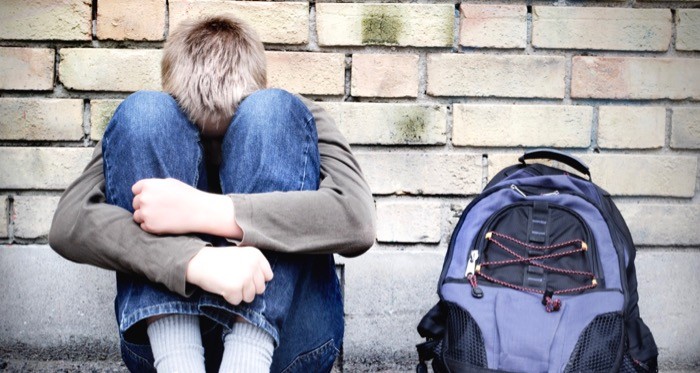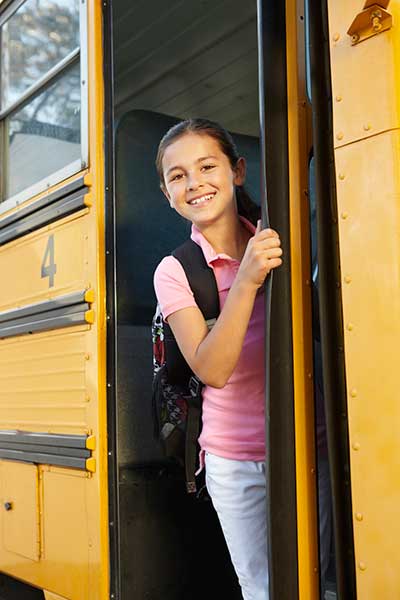Where Do Homeless Kids Go To School?

What can we do to help?
Imagine if every single teacher in California lacked a safe, consistent place to sleep.
Happily, that’s not the case — but in rough numbers, homelessness among California K-12 students is a problem of about that scale. In the 2025 school year, the California Department of Education reported that a record 230,443 California students in K-12 slept “doubled up” — or in a shelter or some other temporary place. It’s a massive problem throughout the state — sometimes in unexpected places:
In 2024-25, about 4% of California public school students were homeless on the date of the state’s annual survey. The percentage varied dramatically by location, generally correlating with low income and English fluency.
Student homelessness is a problem that EdSource has been tracking for years. You can find the rate of change for each county here. According to their reporting, the number of homeless students in California surged in the last decade.
Data about the education of homeless students has gradually improved because America's federal education law, the Every Student Succeeds Act (ESSA), began requiring states to report data for the first time in 2019.
Supporting homeless students in school: The McKinney-Vento Law
Since 1987, the federal budget has provided funding to help ensure that homeless students have access to education as part of the McKinney-Vento Act, signed by President California law, homeless students have special protections to make sure they have access to public education. A lot of red tape is waived for these students. For example, they can enroll in school immediately without the documents normally required, such as proof of residency, immunization records, and school records.
It can be tricky to unpack the laws that determine where a student has the right to attend school, especially when temporary housing lies outside the attendance area of the student’s last school. If you need to dig into the weeds on this issue, visit the California Homeless Education Technical Assistance Center.
Trump threatens to cut funding for homeless students. Congress says: NOPE.
In 2025, President Trump proposed to dramatically cut funding for the education of homeless students by eliminating 18 federal education programs and consolidating them into a new education block grant. As of this writing in August, 2025, the Senate Appropriations Committee has rejected the President’s proposal, at least for 2026.
What is a Homeless Liaison?
Homeless students need special help. They are dealing with poverty, trauma, family instability, lack of sleep and many other issues. Each school district is required under both state and federal law to identify an employee who serves the function of Homeless Liaison.
These liaisons work to ensure that the rights of homeless students are protected, including the right to:
- Participate in school activities;
- Receive transportation to and from the school of origin if requested;
- Attend school where last enrolled (even if the student is living outside that attendance area);
- Automatically qualify for school nutrition programs; and
- Take an extra year to graduate from high school.
The role of homeless liaison may be assigned to an administrator, a counselor, or another staff member. To find the person with this responsibility at your school, ask at the principal's office. (You can also check the list of liaisons reported to the state, but it's not always up to date or accessible.)
The liaison serves as a point of contact to ensure that homeless students are enrolled in school. Beyond that, liaisons help students get appropriate educational services, including Head Start, and provide referrals for health, dental, mental health and substance abuse, and housing services. Among their other responsibilities, liaisons:
- Inform parents or guardians of their children’s educational opportunities;
- Ensure that disputes over eligibility, school selection, or enrollment are mediated;
- Inform parents or guardians about available transportation services and assist in accessing transportation to school; and
- Make sure unaccompanied homeless youth receive additional help, such as verifying their independent status for the Free Application for Federal Student Aid (FAFSA).
It can be hard for students and parents to know that these services are available to them. Schools are required to provide public notice regarding the education of homeless students in locations frequented by parents, guardians, and unaccompanied homeless youth. Outreach posters are available in English and other languages from the California Department of Education.
In addition, the California Department of Education provides a comprehensive list of strategies to help liaisons in the areas of transportation, identification, Title I, enrollment, preschool, and special education.
Homeless students and the LCAP
Homeless students get special attention in a school district's annual plan (the Local Control and Accountability Plan, or LCAP). Each plan must describe goals and specific actions to achieve them for all students and for each student group — including homeless youth.
The achievement of homeless students may show up on the California school dashboard in contexts where there are enough homeless students to satisfy privacy requirements.
How can you help?
First, ask your school site liaison what support would help. Here are some ideas:
- Help create family nights to offer health checks, services, and resources.
- Start a food bank on the school site.
- Organize a parent action group.
- Look harder for overlooked homeless students
- How Teachers Can Support Students Experiencing Homelessness
If your school or district is doing something great to help homeless students, please let us know. We want to share ideas to help our readers throughout the state.
This post was updated in September 2025.
Tags on this post
At-risk students District boundaries Homeless studentsAll Tags
A-G requirements Absences Accountability Accreditation Achievement gap Administrators After school Algebra API Arts Assessment At-risk students Attendance Beacon links Bilingual education Bonds Brain Brown Act Budgets Bullying Burbank Business Career Carol Dweck Categorical funds Catholic schools Certification CHAMP Change Character Education Chart Charter schools Civics Class size CMOs Collective bargaining College Common core Community schools Contest Continuous Improvement Cost of education Counselors Creativity Crossword CSBA CTA Dashboard Data Dialogue District boundaries Districts Diversity Drawing DREAM Act Dyslexia EACH Early childhood Economic growth EdPrezi EdSource EdTech Education foundations Effort Election English learners Equity ESSA Ethnic studies Ethnic studies Evaluation rubric Expanded Learning Facilities Fake News Federal Federal policy Funding Gifted Graduation rates Grit Health Help Wanted History Home schools Homeless students Homework Hours of opportunity Humanities Independence Day Indignation Infrastructure Initiatives International Jargon Khan Academy Kindergarten LCAP LCFF Leaderboard Leadership Learning Litigation Lobbyists Local control Local funding Local governance Lottery Magnet schools Map Math Media Mental Health Mindfulness Mindset Myth Myths NAEP National comparisons NCLB Nutrition Pandemic Parcel taxes Parent Engagement Parent Leader Guide Parents peanut butter Pedagogy Pensions personalized Philanthropy PISA Planning Policy Politics population Poverty Preschool Prezi Private schools Prize Project-based learning Prop 13 Prop 98 Property taxes PTA Purpose of education puzzle Quality Race Rating Schools Reading Recruiting teachers Reform Religious education Religious schools Research Retaining teachers Rigor School board School choice School Climate School Closures Science Serrano vs Priest Sex Ed Site Map Sleep Social-emotional learning Song Special ed Spending SPSA Standards Strike STRS Student motivation Student voice Success Suicide Summer Superintendent Suspensions Talent Teacher pay Teacher shortage Teachers Technology Technology in education Template Test scores Tests Time in school Time on task Trump Undocumented Unions Universal education Vaccination Values Vaping Video Volunteering Volunteers Vote Vouchers Winners Year in ReviewSharing is caring!
Password Reset
Search all lesson and blog content here.
Login with Email
We will send your Login Link to your email
address. Click on the link and you will be
logged into Ed100. No more passwords to
remember!














Questions & Comments
To comment or reply, please sign in .
Jamie Kiffel-Alcheh November 5, 2019 at 8:25 pm